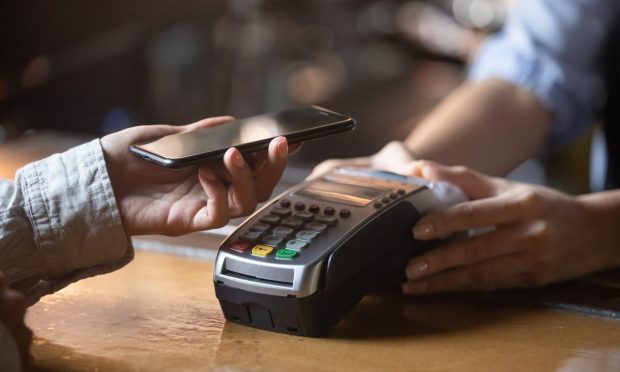Tourism-Centric F&B Businesses Adopt Frictionless Payments to Accommodate Seasonal Rush

While some bars and restaurants operate on a year-round model, expecting some seasonal variation but more or less working the same way from month to month, those that rely on seasonal tourism rushes have a unique set of challenges to which they need to adapt. In the months that account for nearly the entire year’s earnings, they may be swamped with demand, challenged to make the consumer and employee experience as frictionless as possible in order to keep everything moving.
Gladys McKinney, who runs Willow Creek Winery in Cape May, New Jersey, spoke with PYMNTS about how the winery is adding new payment acceptance capabilities to boost its capacity to meet the needs of summer tourists.
“95,000 permanent residents and right by spring, what happens here in Cape May County is those numbers bloom up to around 600,000, who are second homeowners coming in,” she explained. “During the summertime, daytime visitors, beachgoers, overnighters and whatnot, actually build our numbers up to 10.2 million. … And the idea that we were not going to be able to accept anything but regular credit card or chip reader or swipe — it seemed to me like we were going to get outdated fairly quickly.”
Earlier this month, the winery adopted a new payment solution, created by FinTech company Verifone and restaurant software company Lavu, which offers the establishment the option to accept buy now, pay later (BNPL) payments as well as a range of different cryptocurrencies and digital wallets.
The New Digital Convenience
McKinney noted that, by not accepting emerging payment types, the winery was risking alienating consumers who have come to expect frictionless convenience amid the digital shift.
Research from PYMNTS’ 2022 Restaurant Friction Index, created in collaboration with Paytronix, which drew from a survey of more than 500 restaurant managers across the United States, found that 60% of restaurants offer the ability to pay with digital wallets, and 16% do not but plan to invest in offering the technology in the future. Additionally, 97% of top performing restaurants offer digital wallet payment capabilities, while only 53% of bottom performers do the same.
See more: Loyalty Programs Best Way to Get Diners to Spend More
The study also drew from an October survey of a census-balanced panel of more than 2,100 U.S. consumers, which found that nearly a quarter of all respondents say the ability to pay with digital wallets would make them more inclined to shop with a given restaurant.
McKinney noted that digital wallets such as PayPal and Google Pay are “becoming more and more popular,” adding that these options have advantages for both the winery and the consumer.
“We know and understand the cutting-edge technology that this is — we need a more secure environment like PayPal when we are dealing with our consumers,” she said. “And they need it. Our consumers need it.”
Friendly Fraud
Indeed, security is a concern for the winery not only when it comes to third-party fraudsters but also first-party fraud, also known as friendly fraud, where consumers exploit or abuse existing company policies, such as returns, chargebacks or promotions. For instance, a customer may request undue chargebacks, falsely claiming that their transactions were fraudulent or that their orders never arrived.
Research highlighted in PYMNTS’ February Digital Fraud Tracker®, Digital Fraud: Why Context Is Key to Effectively Fighting Fraud, created in collaboration with DataVisor, highlights findings that chargebacks accounted for 29% of digital retailers’ fraud losses last year. The study also noted findings that fraud affecting travel and leisure companies grew by 156% in Q2 2021.
See also: PYMNTS Intelligence: The Problems of First- and Third-Party Fraud in the Digital Ecosystem
McKinney predicted that there will “always” be “that friendly fraud,” noting that all restaurants with which she has worked have experienced this in some form. She added that, as she sees it, vendors’ best solution is to hold onto signed receipts, be they digital or physical. Granted, new payment methods bring up new security concerns.
“We’re all still trying to figure out what does fraud look like in cryptocurrency, because we’re not really sure,” she said.
The Bread and Butter of Consumer Payments
Looking at how consumer payments have changed at the winery since the start of the pandemic, McKinney noted the greatest growth in adoption of mobile tap-and-pay options across demographics.
“The one thing that is coming more prevalent even in the older crowd is tap-and-pay, which is a complete change from where I thought it was going to be,” she said. “I thought it was going to be the younger ones.”
She added that, as people over 50 have tried out the technology, they have increasingly come to expect it and to request that the winery add mobile tap-and-pay capabilities.
Yet ultimately, while McKinney believes it is crucial to adapt to consumers’ evolving payment preferences, she nonetheless predicts that the bulk of payments will continue to revolve around more traditional, familiar methods into the future.
“When we look at payment methods, always number one is going to be the debit card, number two is always going to be cash with number three being credit card,” she said. “I think a lot of companies are feeling the same way at this point.”
